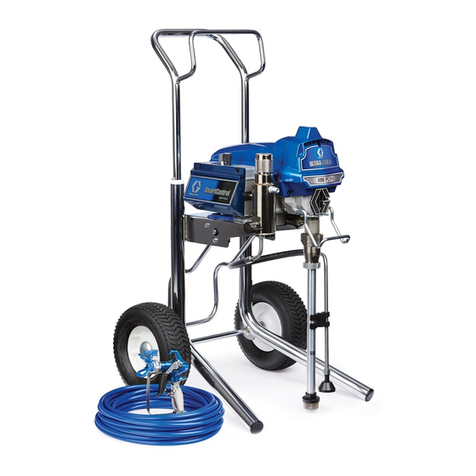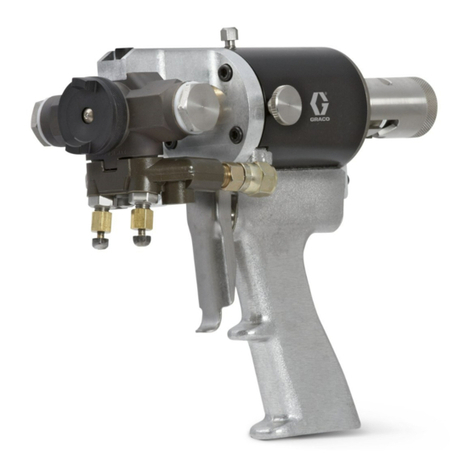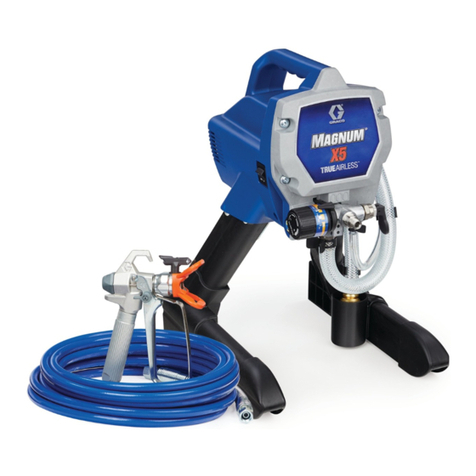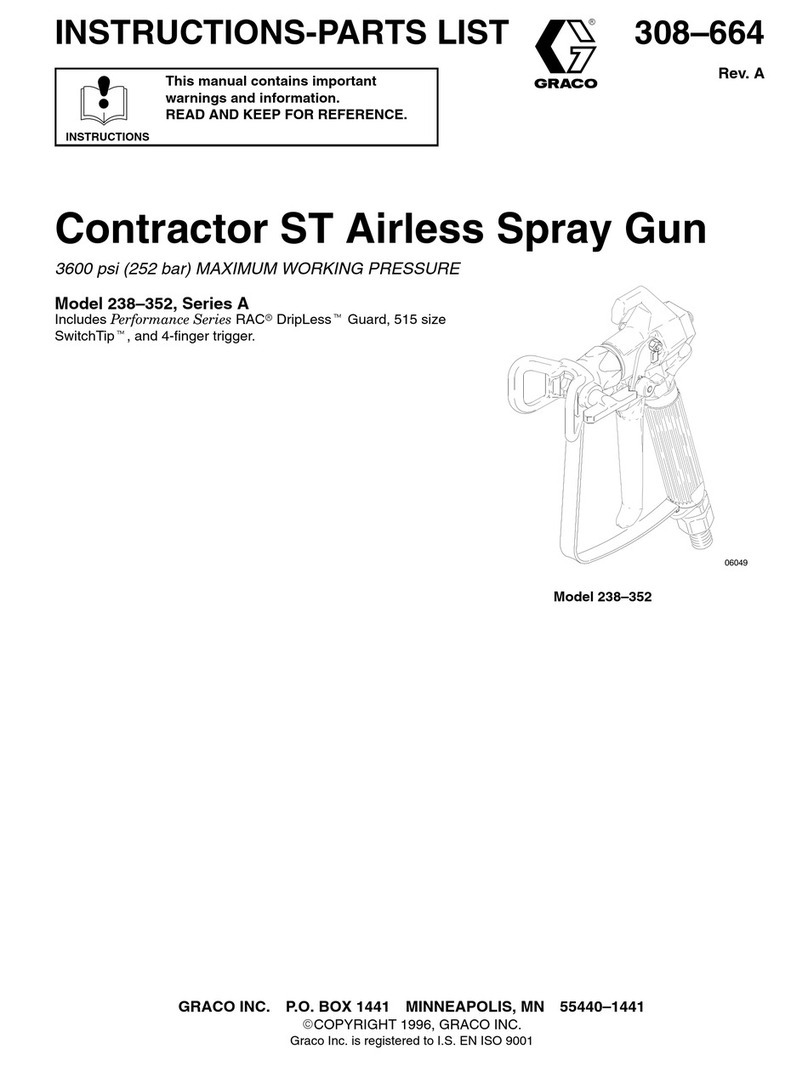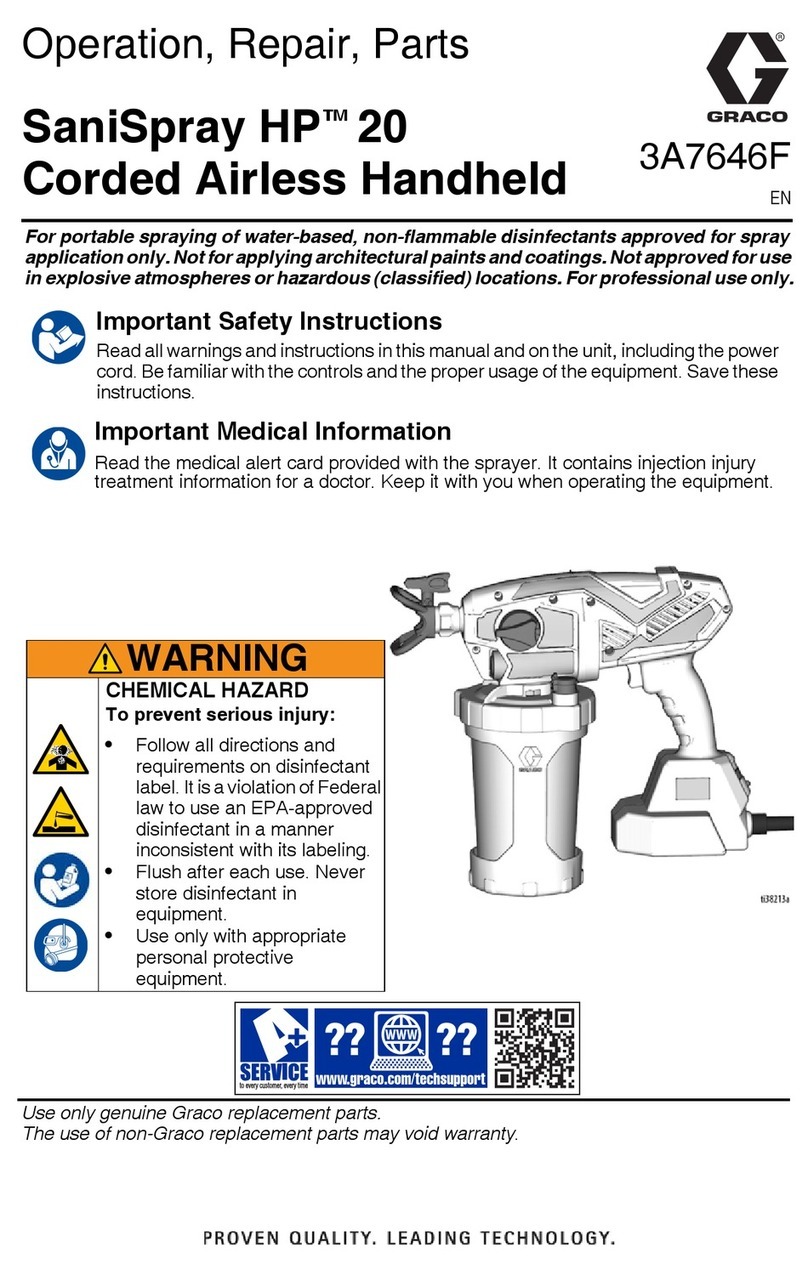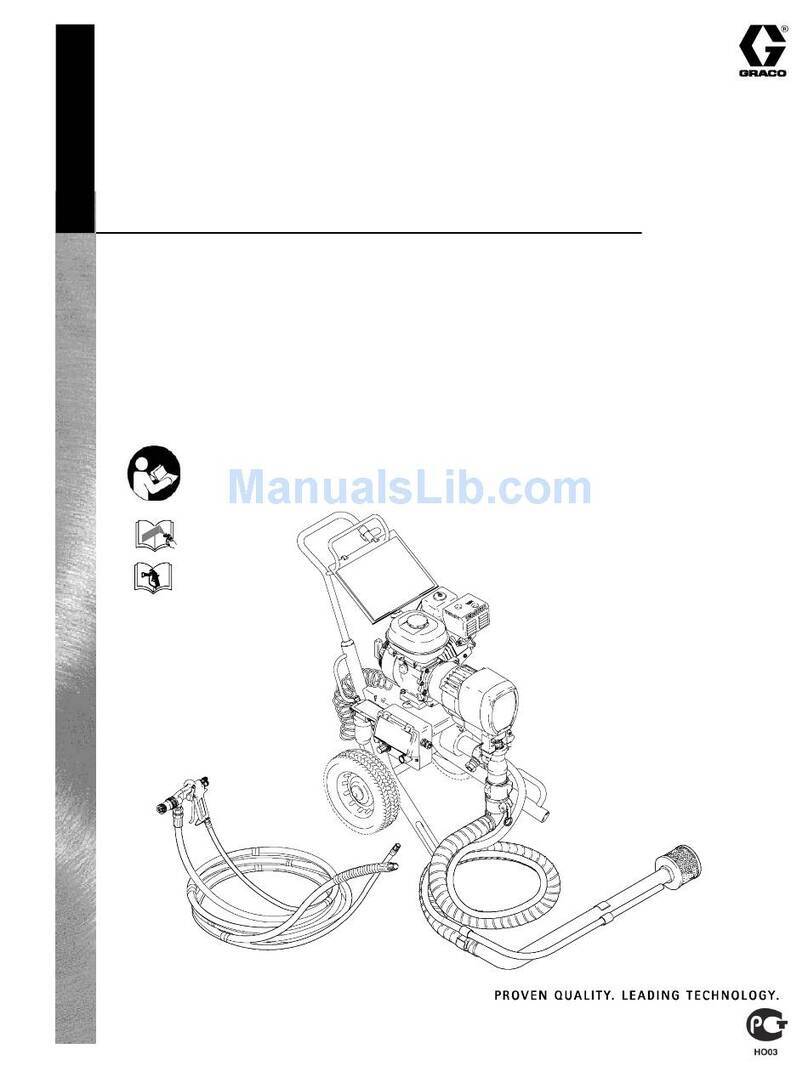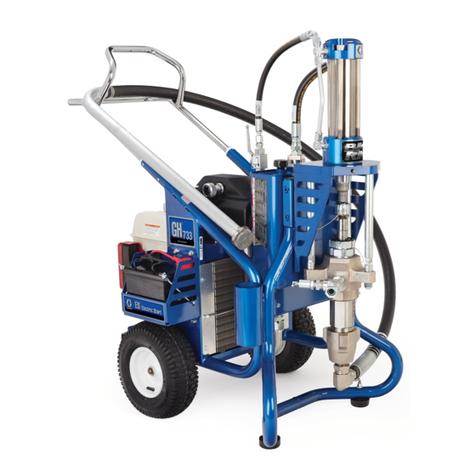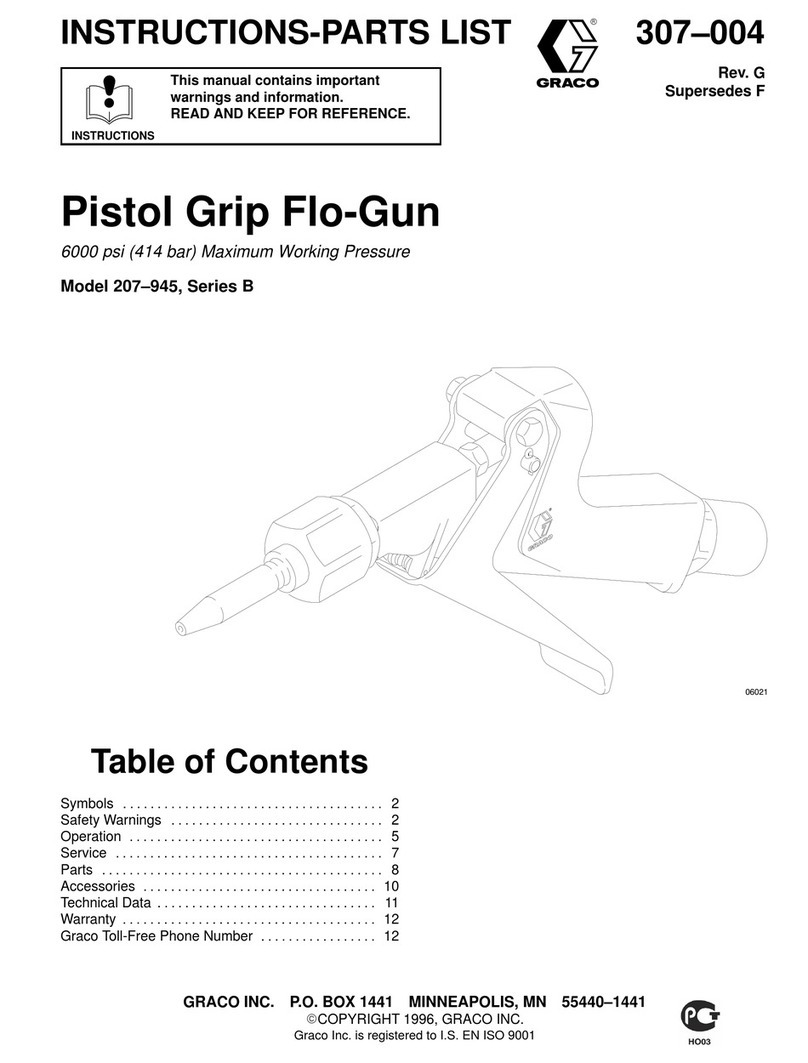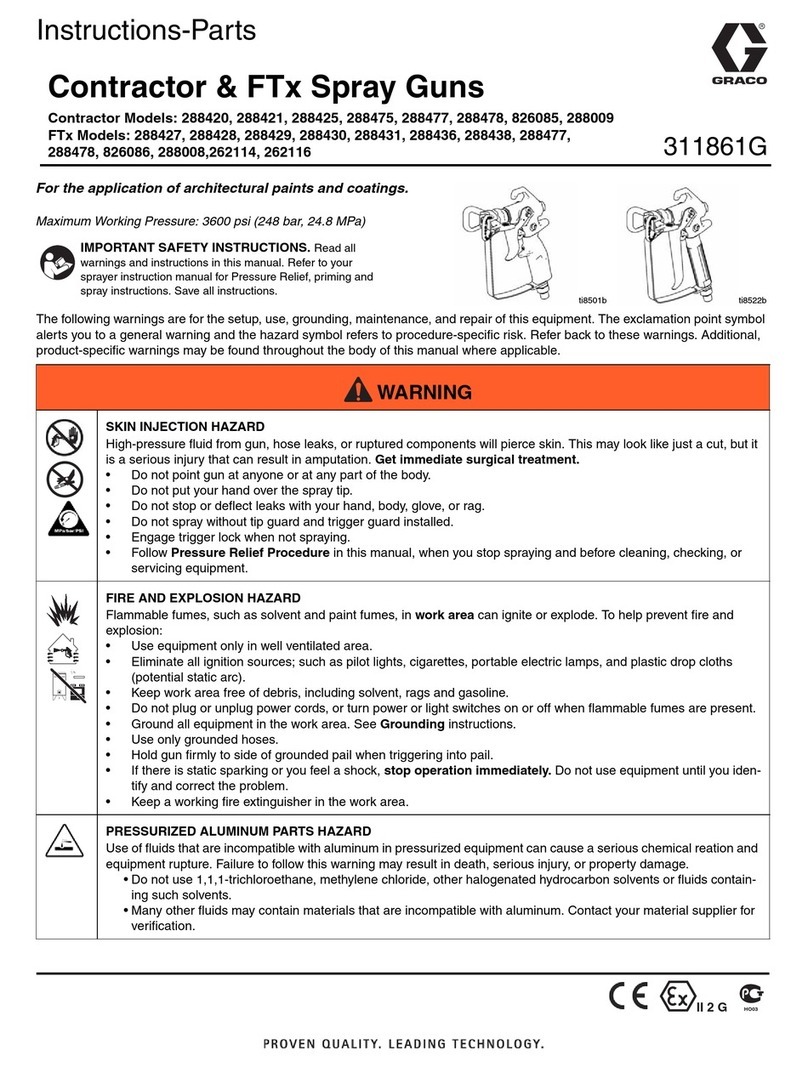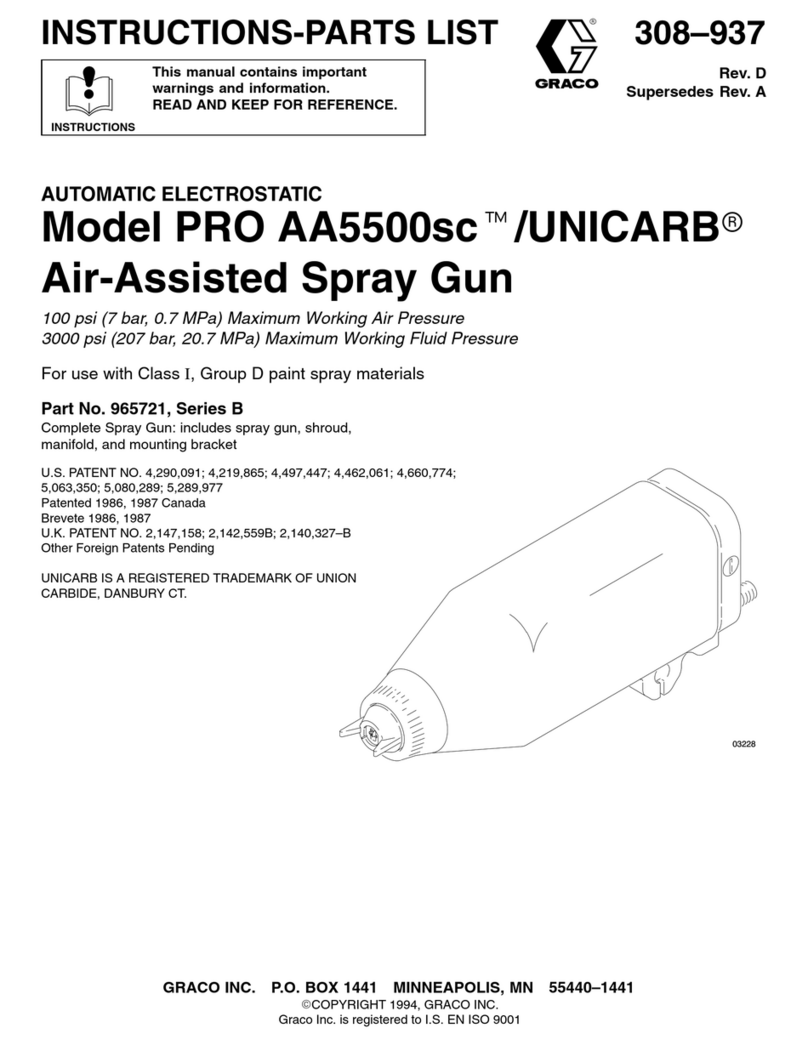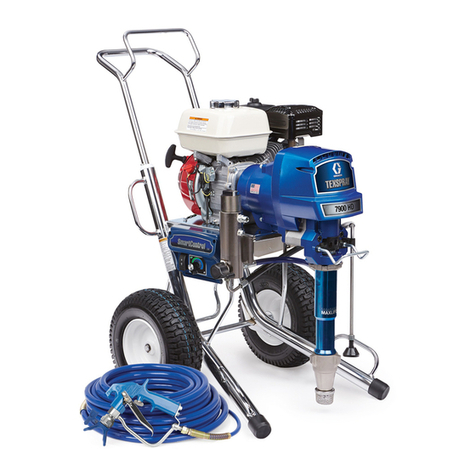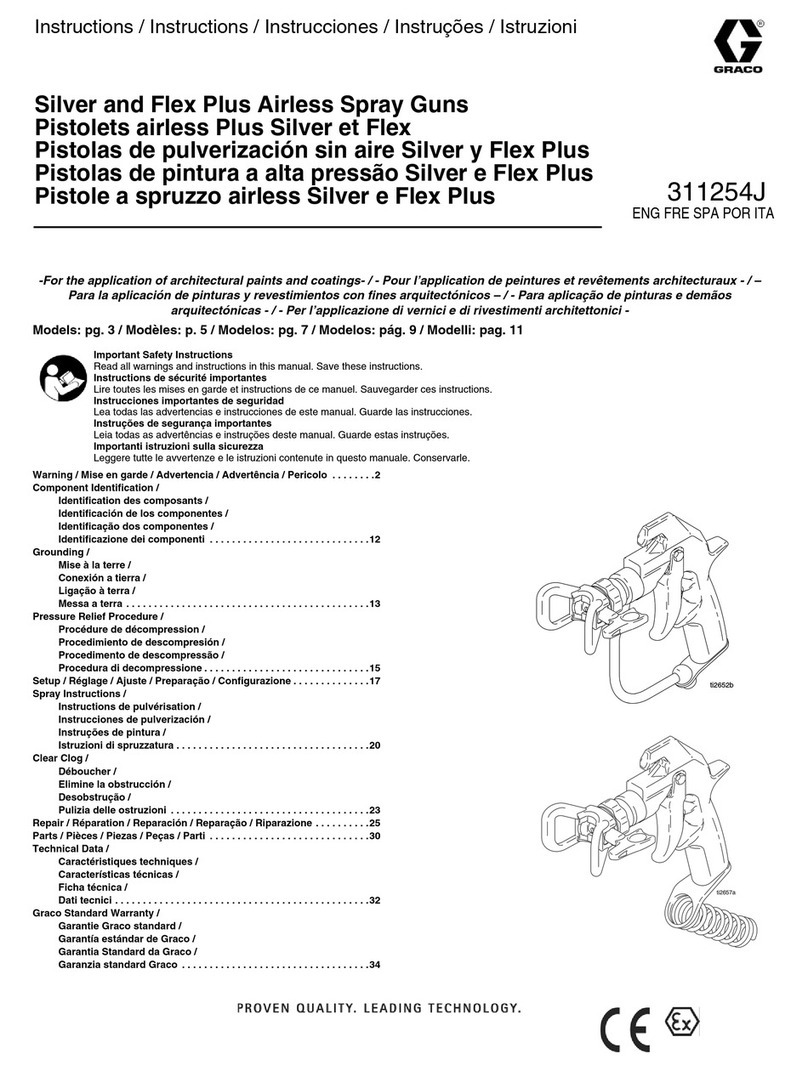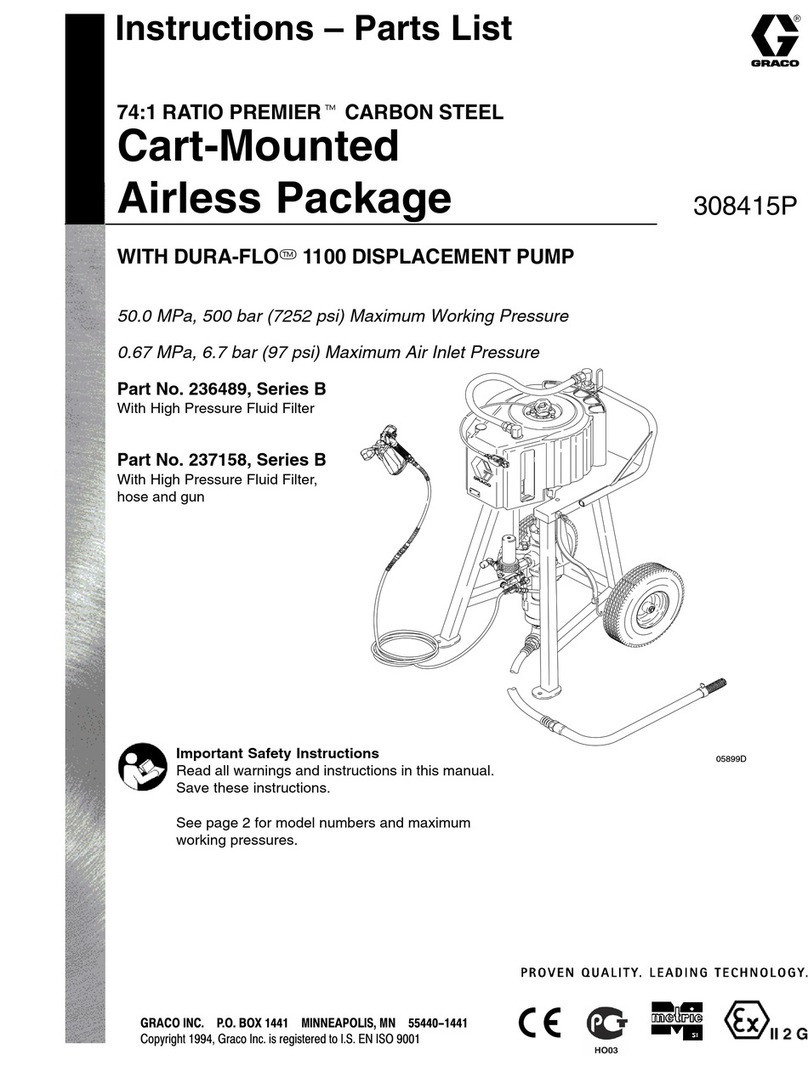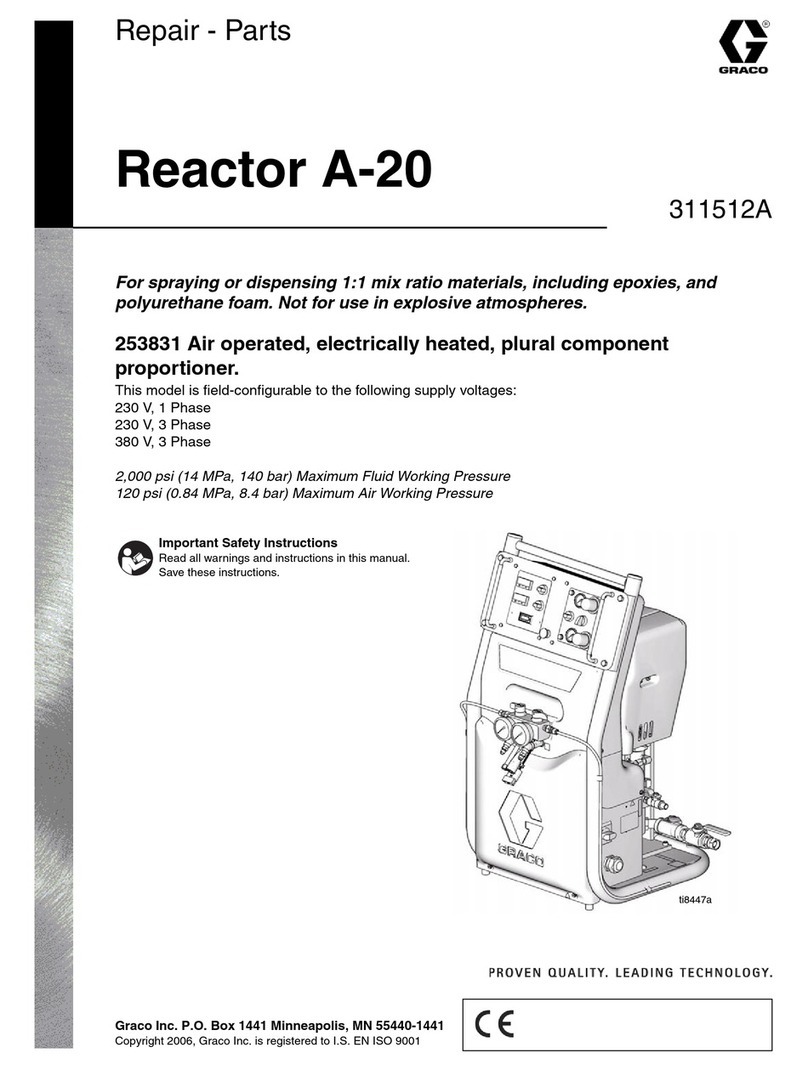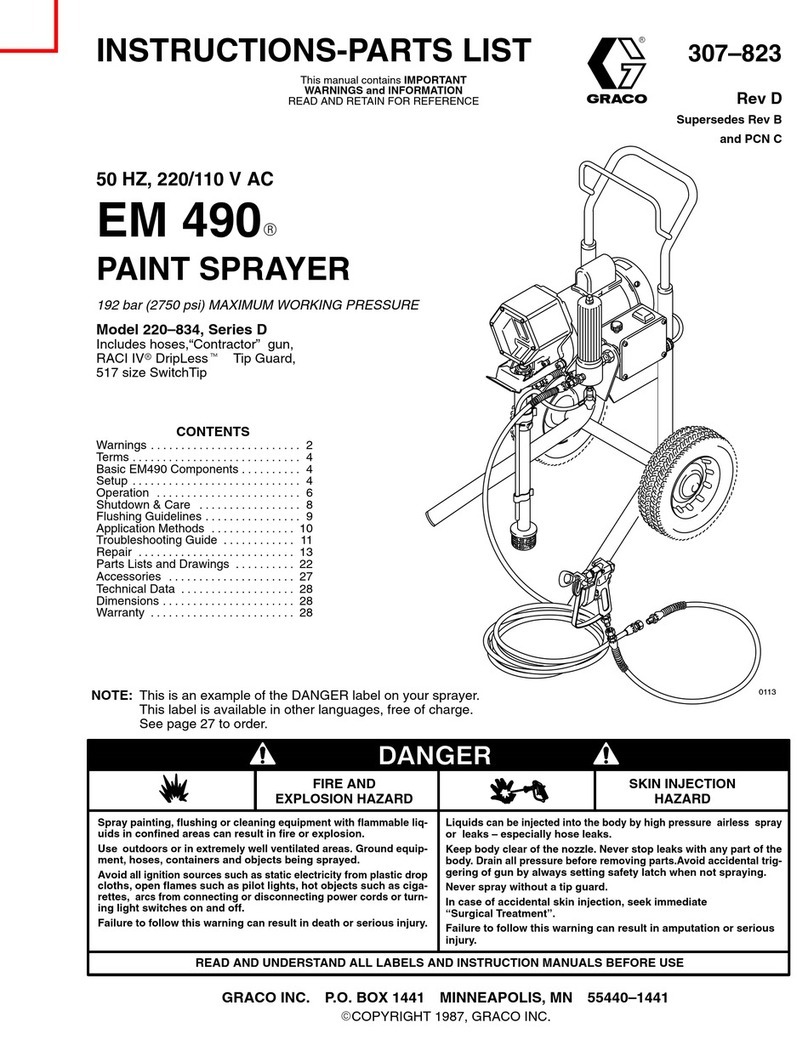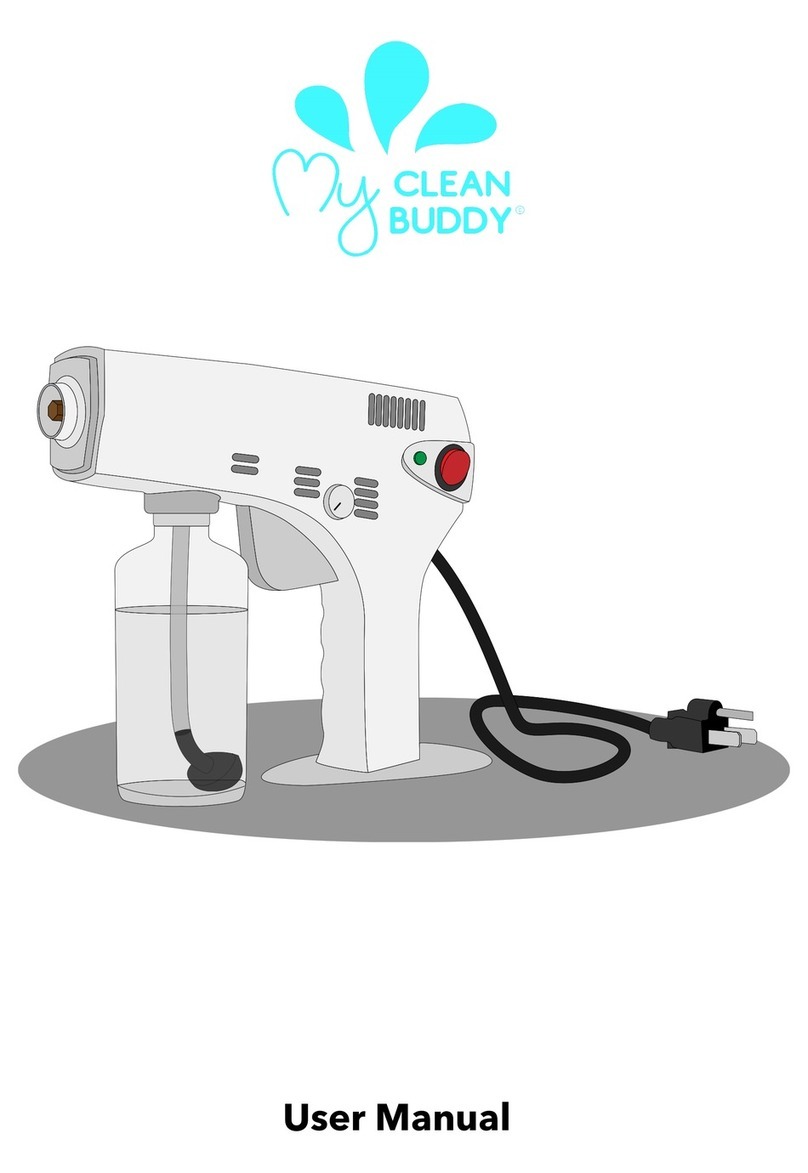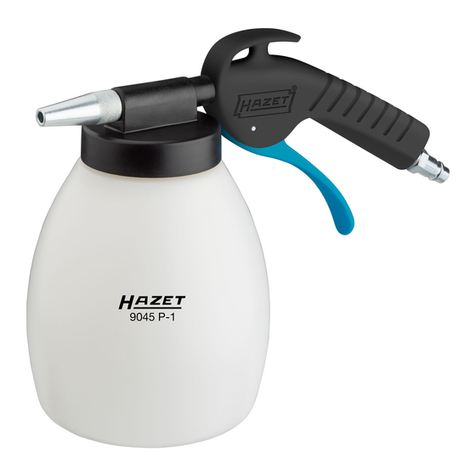
parts. KEEP CLEARof moving parts
when starting or operating
Moving parts can pinch or amputate
your fingers or other
body
the sprayer. Follow the Pressure Rellef Procedureon page
2
before checking or servicingany part of the sprayer,to prevent
it
from
starting accidentally.
General Safety
Any misuse of the spray equipment or accessories, such as
overpressurizing, modifying
parts,
using Incompatible chemi-
caisandfluids,orusingwomordarnagedparts,cancausethem
to
rupture
and
resultinfluid injection, splashing in the eyesoron
the skin, or other seriousbodilyinjury, or fire, expiosion orprop
erty damage.
cause it to malfunction.
NEVERalterormodifyanypanofthisequipment;doingsocould
CHECKallsprayequipment regularly andrepairorreplaceworn
or damaged parts immediately.
Always wear protective eyewear, gloves.clothing and respirator
as recommended by the fluid and solvent manufacturer.
System Pressure
This sprayercandevelop
3000
psi
(210
bar) MMiMUM
WORK-
ING
PRESSURE.
Be sure allspray equipment
and
accessories
used are rated to withstand the this Dressure. DO NOT exceed
the maximum working pressure
of
any component or accessory
usedinthe system.
Fluid
and Solvent Compatibility
All
chemicals used
in
the sprayer mustbechemically compat-
ible with the wetted parts shown
in
the TECHNICAL DATA on
page39.Consultyourchemicalsuppliertoensurecompatibllity.
Donotuse1,1,l-trichioroethane,methyienechioride,otherhalo-
aenated
hvdrocarbonsolventsorfiuidscontaininasuchsoivents
h
this eauioment. which contains aluminum anslor zinc oarts.
~ ~~~
Suchusecould result
in
a-serious~chemical reaction,
wiih
the
possibilityofexplosion, whichcouldcausedeath, seriousbodiiy
_.~ ~ ~~
injury and/or substantial property damage.
Highpressurefluid inthe hosescan bevery dangerous.
If
the
damage or misuse, thehighpressure spray emitted from
it
can
hose develops a leak. split or rupture due
to
any kindof wear,
causeafiuidinjectioninjuryorotherseriousbodiiyinjuryorprop
erty damage.
ALL FLUID HOSES MUST HAVE STRAIN RELIEFS ON BOTH
at or closetothe coupling which
can
result
in
hose rupture.
ENDSl~estrainreliefsheipprotectthehosefromkinksorbends
TIGHTEN ail fluidconnections securely before each
use.
High
pressurefluid candislodge alwsecoupllngorallow highpres-
sure spray
to
beemitted
from
the coupling.
NEVER usea damaged hose. Before each
us,
check the entire
hoseforcuts,leaks,abrasion, bulging cover,ordamageor
mwement
ofthe hosecoupiings.
if
anyoftheseconditionsexist,
replace the hose immediately. DONOTtrytorecouple highpres-
sure hose or mend it with tape or any other device.
A
repaired
hose cannot contain the high pressure fluid.
hosestomoveequipment. Keephosesclearof movingpartsand
HANDLEANDROUTEHOSESCAREFULLYDonot pull
on
hotsurfacesofthepumpandgasengine.Donotusefluidsorsoi-
vents whichare notMmDatible
with
the inner tube and cover
of
the hose.
DO
NOT expose Graco hoses
to
temperatures above
180'
F
(82"
C) or below
-40'
F
(-40°
C).
HoseGrounding Continuity
grounded spray system. Check the electrical resistanceofyour
Proper hosa grounding continuity is essential to maintaining a
fluidhoses at ieast once a week.
If
your hose does not have a tag
on
it which specifies the maximum electrical resistance, contact
the hose supplier or manufacturer for the maximum resistance
limits. Use a resistance meterinthe appropriate range for your
hose
to
check
the
resistance.
If
the resistance exceeds the rec-
ommendedlimits.replaceitimmediately,Anungroundedor
poorly grounded hose can make your system hazardous. Also
read FIRE
OR
EXPLOSION HAZARD, below.
Always read the chemical manufacturer's literature before using
them
in
thissprayer.
Static electricityiscreated by the flow of
fluid
through the pump
and
hose.
If
every part of the spray equipment is
not
properly
grounded,sparkingmayoccur,andthesystemmaybecomehaz-
ardous.Sparkingmayalsooccurwhenplugginginorunplugging
a~werSUDDlvCOrdOruSinaaaasolineenaine.Soarkscanionite
6mes
from'sdlvents and
tk
fruid being sprayed,
dust
partbs
and other flammable substances, whether you are spraying in-
-
~
---
doorsoroutdoors,andcancauseafireorexpiosionandserious
Wilyinjury and property damage.
ifyouexperienceanystaticsparkingorevenaslightshockwhile
usingthisequipment.ST0PSPRAYlNGiMMEDIATELY.Check
the entire system for proper grounding. Do
not
use
the system
again until
the
problem has been identified and corrected.
To
reduce the risk of static sparking, ground the sprayer and ail
Grounding
otherspray equipmentusedorlocatedinthesprayarea. CHECK
your local electrical code for detailed grounding instructions for
your area and type of equipment. BE SUREto ground all of this
spray equipment:
1.
Sprayer:connectagroundwireandclamp(supplied)toatrue
earth ground.
spilledona hot surface can ignite and cause a fire.
NEVERfillthe fuel tank while the engine is running or hot. Fuel
ALWAYSpourfuel
in
slowiy
to
avoidspiliing.Also read FIRE
OR
EXPLOSION HAZARD, above, and FUELINGonpage
9.
gineexhaustis piped outside.Theexhaustcontainscarbon
NEVER operatethe engine
in
a
closed buildingunless the en-
cause serious Illness and even death of inhaled.
monoxide,
a
poisonous, odorless and invisible gas which
can
2.
Fiuidhoses: useonly grounded hoses with a maximum of
500
~(150m)combinedhoselengthtoensuregroundingcontinu-
itv.
See
Hose Groundlna Contlnultvabove.
-
3.
Spraygun:obtalngroundingthroughconnectiontoaproperly
grounded
fluid
hose and sprayer.
4.
Object beingsprayed: according to local code.
5.
Fluid supply container: according
to
local
code.
6.
Allsolventpails
used
whenllushing,
according
to
local
code.
pail
on
a non-conductive surface. such as paper or card-
Use
only metal pails, which are conductive.
Do
notplacethe
7.
To
maintain grounding continuity when llushing
of
felieving
board, which interrupts the grounding continuity.
pressure, alwayshold
a
metal part
of
the gun firmly to the side
of
a grounded metal pail, then trigger the gun.
Flushing Safety
Reduce theriskof fluid injection injury, staticsparking.orsplash-
ingby following the flushing procedure given
on
page
12
of this
2,
and remove the spraytipbefore flushing. Hold a metal partof
manua1,FollowthePRESSURE
RELIEF PROCEDUREonpage
the gun firmly
to
the side of a grounded metal pail and
use
the
lowest possible fluid pressure during flushing.
United States Government safety standards have been adopted
under the Occupational Safety and Health Act.
These
standards
-
particularly the General Standards, Part
1910,
andtheCon-
struction Standards, Part
1926
-
should be consulted.

